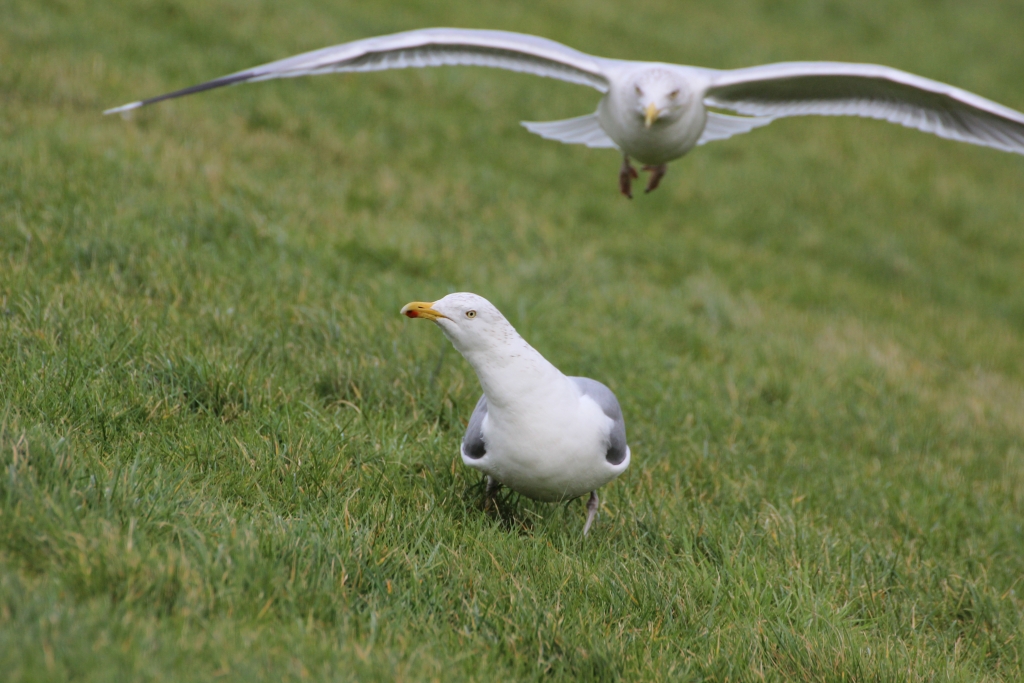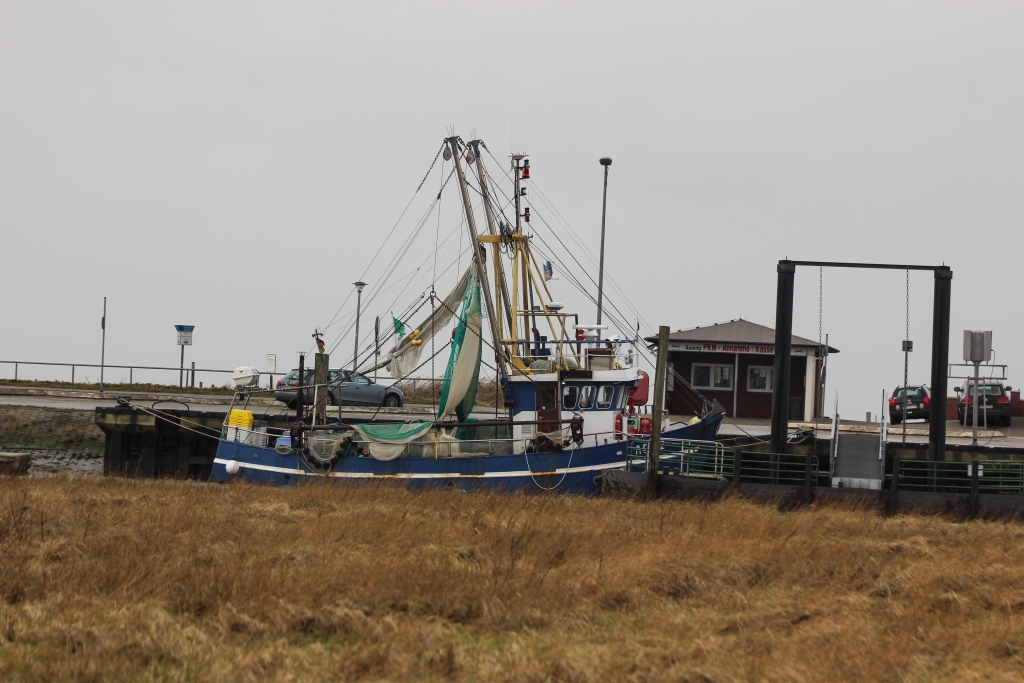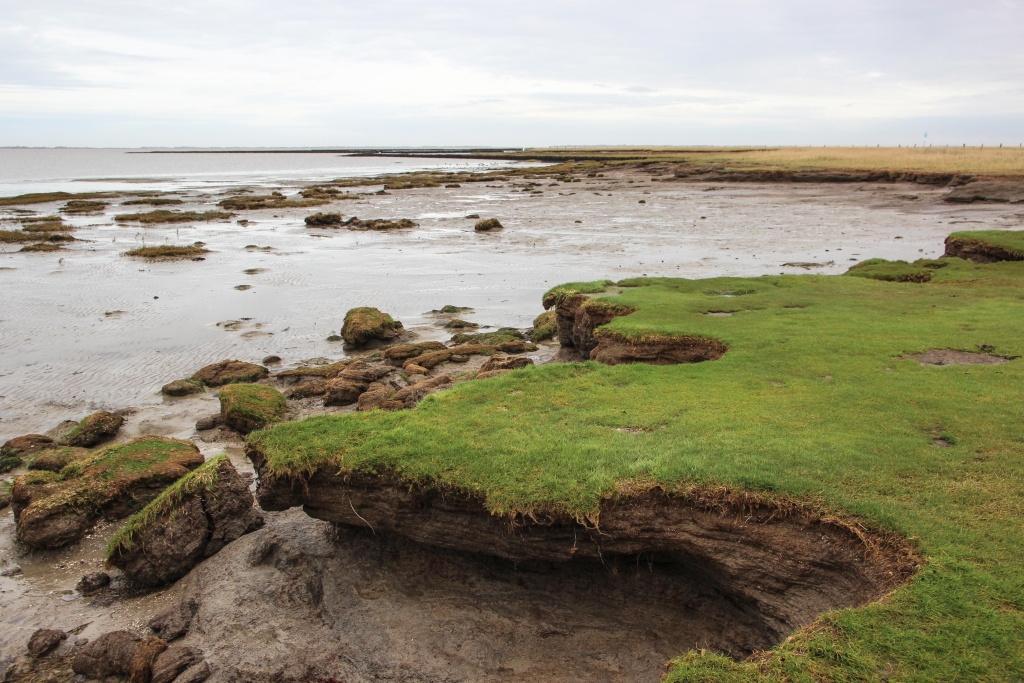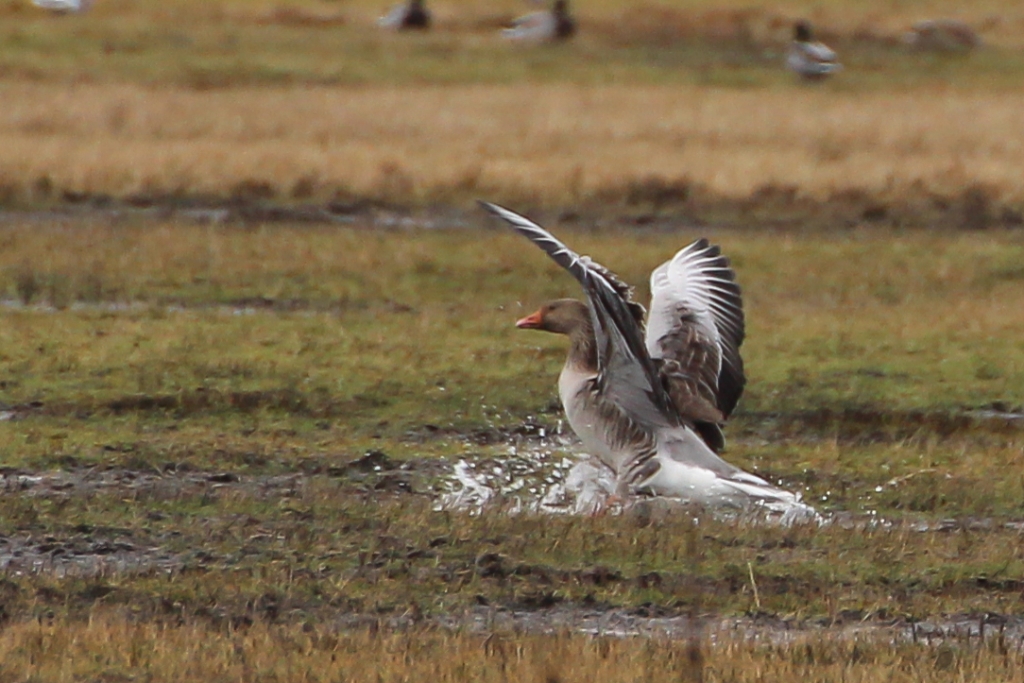“Where are you going?” – “North.” – “Yes, but where exactly?” – “To North.” There are many dialogues like this one before the trip. The German word “Norden” which translates to “North”, in this case, is not only a point of the compass, but also the name of a town in East Frisia, a region in the very north of Germany. From Bavaria the drive takes about seven hours – accordingly my mood is bad, when the highway is blocked and we have to switch to the country roads. It doesn’t take long until I‘m glad about it. Otherwise, we would have missed the beautiful tree-lined avenues and the small red brick houses in the evening light.



“Why have you come in this terrible season?” Together with a shake of the head, these were the landlady’s welcome words. She is right, why would anyone want go to the North Sea in wintertime? Often the wind blows like a hurricane and the time windows between rain showers are small and unpredictable. Well, we were there to visit a friend who recently moved to the area. We found out, there are certain things that are special to the wintertime, for example birds, across the board, as far as the eye can see, many, many birds.

The picture above shows fox decoys a farmer has placed to keep the feathered packs off his fields – with limited success, as you can see. Most birds in the photo are barnacle geese. In the summer, they breed in Arctic regions, inter alia in Spitsbergen. In winter, they move to warmer regions in the South. Other migratory birds that you may encounter at the North Sea are eider ducks, grey geese or peregrine falcons. There are also native shorebirds that live at the coast throughout the year. The redshank, for example, which, as the name suggests, has red legs. There are also curlews with the characteristic long and curved beak.

Travel Tip: For clear close-ups of wild animals a professional photo equipment is recommended. On this occasion an appeal to the photo industry: If you ever need someone to test your wildlife telephoto lenses, the really big tubes, I volunteer. Until then, I’ll have to make do with my 300 mm focal length. Thanks to the trusting gulls, I finally manage to take a few sharp shots.



Fun Fact: seagulls trample on the spot in order to simulate rain. As soon as earthworms come to the surface, they get eaten. Some gulls let other gulls do the work for them and then simply steal the worm as you can see on the pictures above.



Norderland‘s coast is part of the Wadden Sea, a landscape designed by the tides which is unique in the world. It produces about as much biomass as a tropical rainforest. It offers tons of food and, therefore, is a linchpin for bird migration. Animals from Scandinavia use it as a “fueling station” in order to continue to warmer regions. What would a visit to the North Sea be without a walk in the tidelands? So, bring your rubber boots!


If you walk across the mudflats without a local guide, you should not move too far from the shore. The water returns faster than you think, and not evenly at all. I‘ve been told, tourists often get caught between the water currents, standing in the sea already up to the chest when the rescue arrives. Fortunately, most of them had a cell phone with them.
The Bird of the Wadden Sea par excellence is the oystercatcher. At low tide, the so-called “Hallig Stork” trudges through the tidal flats and digs with its beak the blow lugs from their hiding place in the mud.
Fun Fact: According to the “Big Five” in Africa (elephant, rhino, buffalo, lion, leopard), the National Park Authority for the Wadden Sea has come up with a “Small Five”: blow lug, cockle, beach crab, mud snail and brown shrimp.



Millions-of-years–old tree resin will turn into – since Jurassic Park everyone knows – amber. Many fossil forests have been flooded and the amber has been washed into North Sea. At first, the orange thing lying in front of my feet, looks like a stranded piece of plastic. “Look, amber!” I joke. “Nonsense,” my companions say, but when they look closer, they seem a little jealous. Indeed! Amber! A lump the size of a 2–euro coin. I had double the luck, because the lump could also have been phosphorus from incendiary bombs, leftovers from the Second World War. Phosphorus looks similar to amber, but is highly flammable and may cause severe burns.



On the way back there are gray geese as far as the eye can see. There are also some sheldrakes, at least that’s what the guys say. I don’t see them, unfortunately. The eye-catching white,brown and green animal is somehow special. It is still unclear to biologists, whether the bird is a duck or a goose because it has characteristics of both.
Fun Fact: The sheldrake is a cavity nester. For this purpose it sometimes uses a fox burrow. The fox, otherwise a natural enemy, does not harm the bird. People say, in the burrow prevails truce.



The Hilgenriedersiel is a wet land on sea level which gets occasionally flooded. Therefore, the barbed wire is covered with stranded grass that sways in the wind – a really nice photo opportunity. Eventually, we have enough of the stiff breeze and our stomaches growl. It is time to visit the city center of Norden.






The growling in our stomaches gets louder and we keep an eye out for a restaurant – not a simple matter, the early afternoon in the off-season does not seem to be very profitable for gastronomers. Most places are already closed. In a small side street, we will find the Speicher No 77 which is a cozy and modern restaurant with high ceilings, colorful but unobtrusive art and a friendly waitress who resumed our order with a smile shortly before closing time. You can observe the cook doing his work and he really has nothing to hide, the redfish was delicious.







In addition to the many information panels and many interactive teaching stations, you can daily watch the seals being fed by the keepers. If you cannot make it at the time, the most beautiful place in the visiting room is the underwater glass window. There, you can see, how delicate and agile the little dumplings are under water.



Leave A Comment